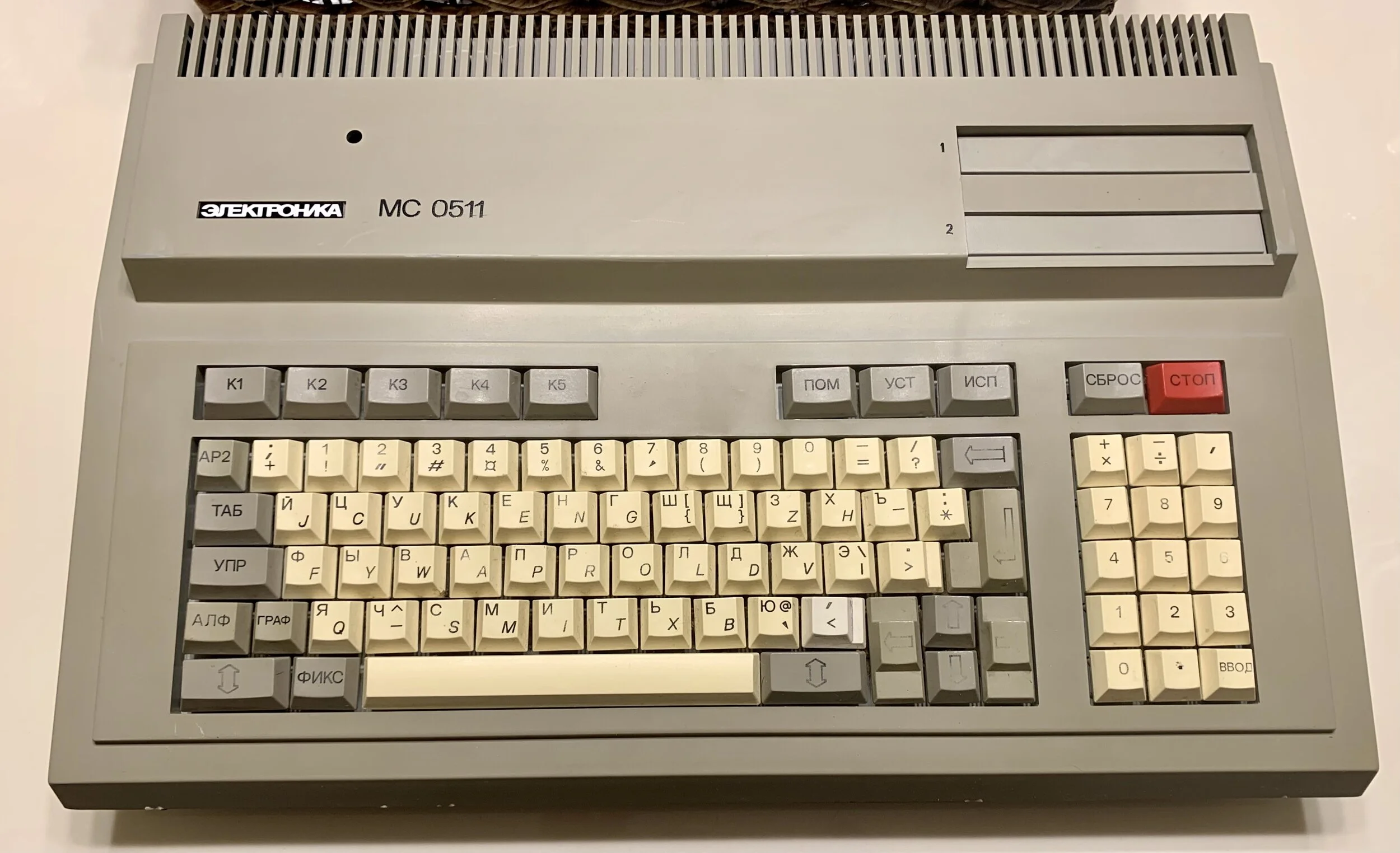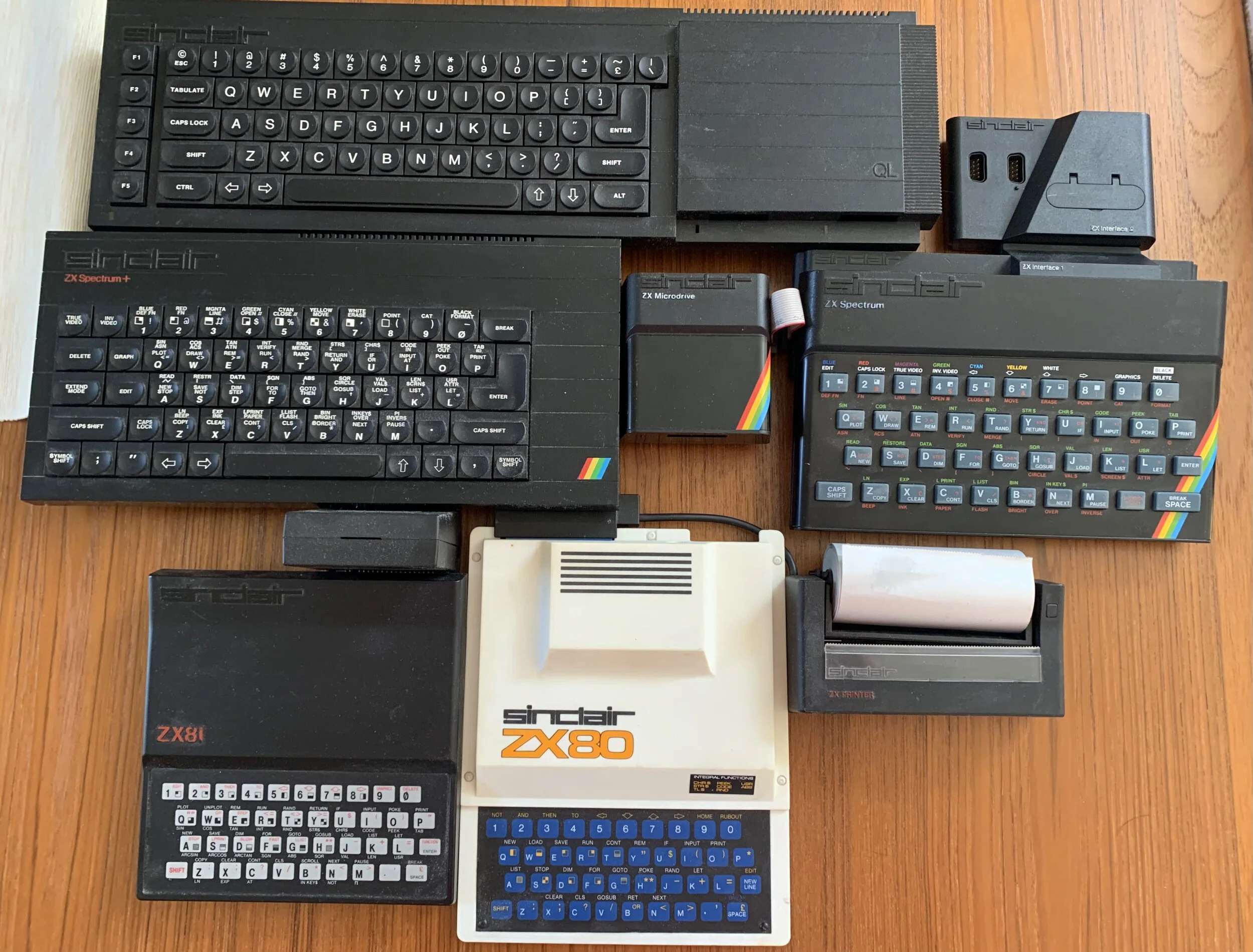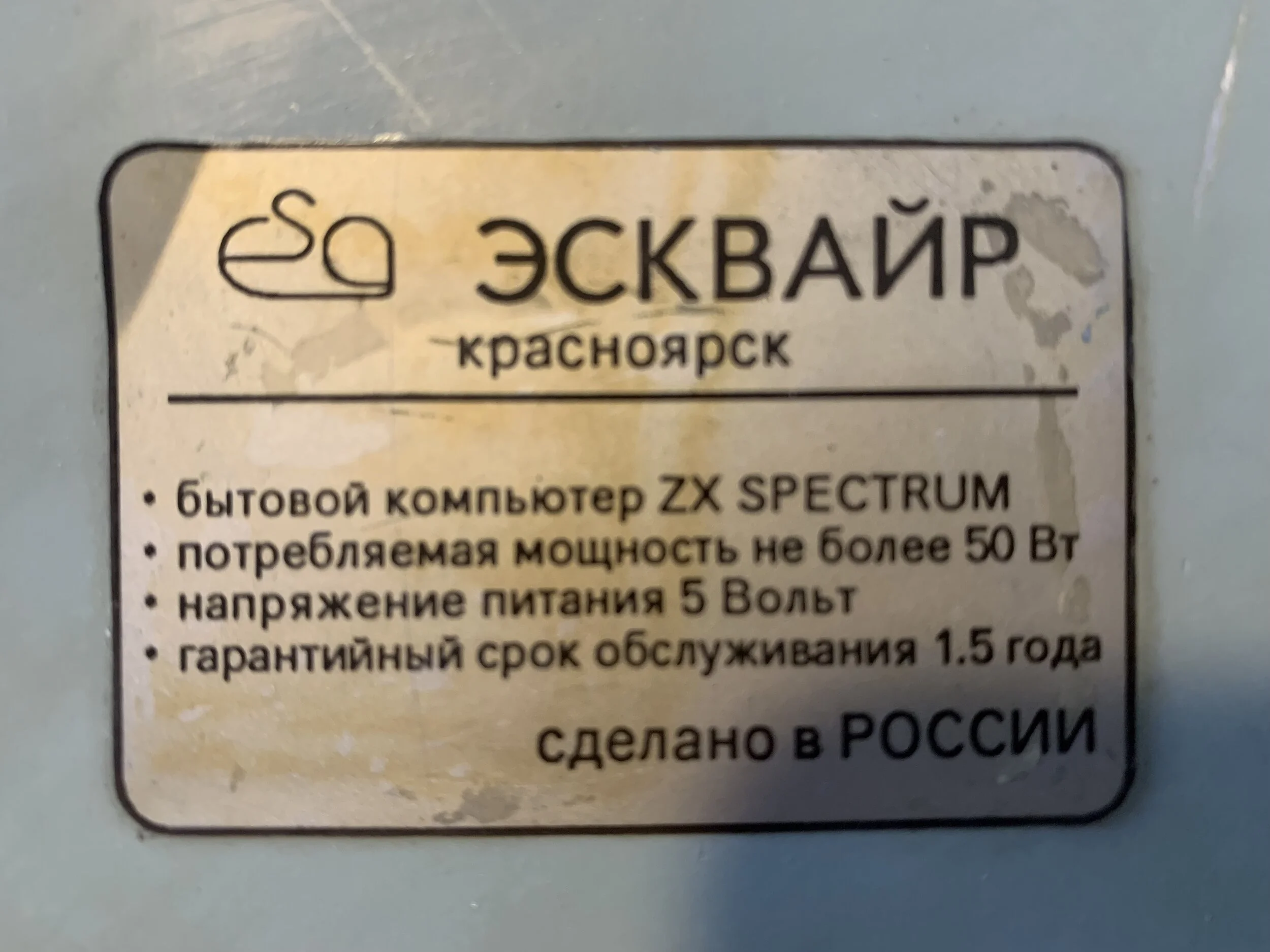Soviet Computers 2 - Electric Boogaloo
OK, so I couldn’t stop myself from picking up a few more Russian computers on eBay. But just to be clear, I can stop anytime I want.
This first one is a bit different in that it’s not a ZX Spectrum clone. This one is a clone of the PDP-11. According to Wikipedia, The PDP-11 was a series of 16-bit minicomputers sold by Digital Equipment Corporation between the 70s and the 90s, which influenced hardware such as the Motorola 68000 and intel x86 series, as well as operating systems such as CP/M and MS-DOS.
The original PDP-11’s were full-on whirring tape reel, flashing light, and loads of buttons 70’s style computer like the monster pictured below.
Credit: Stefan Kögl
While the majestic beast above would look fabulous in my office, it would no longer be my office. It would be the PDP-11s office. The clone I got hold of is significantly smaller, but it is a bit of a behemoth compared to the rest of my little collection of 8-bit machines.
Let’s hear it for the Elektronika MC 0511 everyone!
There are a couple of things that immediately come to mind when I look at this machine. First, holy cow that’s a big computer. Second, its quite MSX-y.
First of all, this is a sizeable machine. It’s around 17.5” (445mm) wide and 10.5” (267mm) deep. Here it is compared to a late-model Commodore 64. It’s not an Apple Ii, but it’s big. I don’t have one handy, but I’m thinking it’s closer in size to an Amiga 500 or Atari 520ST.
And the MSX-y part? Those dual cartridge slots at the top right, as well as the five function keys above the number row on the keyboard, are very reminiscent of the MSX machines, and indeed the case design and was supposedly influenced by a model Yamaha MSX machine the USSR purchased for educational use in the early ‘80s. When you see the Yamaha machine, I think the similarity will be quite clear.
mix.org
Unfortunately, the MC-0511 I have is not complete. In fact, it’s just the case and keyboard, so I don’t really have a lot to say about this machine. But let’s take a quick look around anyway.
As mentioned above, the MC-0511 has two cartridge slots on top of the case. These slots are exactly the same size as MSX slots, but I have no idea if they had compatible connectors. The only similarity this machine has to the MSX computers is physical so there’s no way MSX cartridges could be used in the MC-0511.
It’s likely there was some kind of power LED above the label at the top right. The label itself is I’m guessing is “Electronic” in Cyrillic script, but because the letters in the logo are joined together, Google Translate couldn’t make up its mind what it says. Translate did briefly flash “ELECTRONICS”, but it also flashed “VERONIKA” so who knows. The label is an untextured paper of vinyl label fitting in an inset in the top case. The model number is printed on the case itself.
The keyboard has Latin characters, but the layout is not a standard QWERTY layout. It’s actually a JCUKEN layout which apparently was pretty much the standard in Russia. (Thanks Wikipedia!). As well as what I assume are the standard keys, the MC 0511 also has a numeric keypad, five function keys, three keys above the alpha keyboard which according to Google Translate say POM, mouth, and ISP. Yeah. Above the numeric keypad, there is a reset key and a scary-looking STOP key.
The keyboard feels reasonable and I’m assuming someone familiar with a JCUKEN keyboard layout could quite happily touch-type on it. Some of the keys on the numeric keypad, as well as the left Shift, cursor and Enter/Return keys have worn to various degrees, but I think this is from extended use rather than any issue with the printing on the keys.
The right hand side of the machine is completely blank.
The left-hand side has a couple of ports (or holes in the case where ports would be). The port on the left is a network, port. the larger slot on the right appears to be for some kind of system expansion which you’ll be able to see more clearly on the bottom.
The rear of the machine has numerous ports. Unfortunately, the markings are mostly two-letter abbreviations which Google Translate can’t really do anything with. The small rectangular hole on the left was for a reset button. The MC-0511 did have a cassette interface so if I had to guess, the BM ports were maybe the cassette in and out ports.
Without any innards, there’s really nothing left to show you about this big guy, but I hope you’ve found this mildly interesting.












